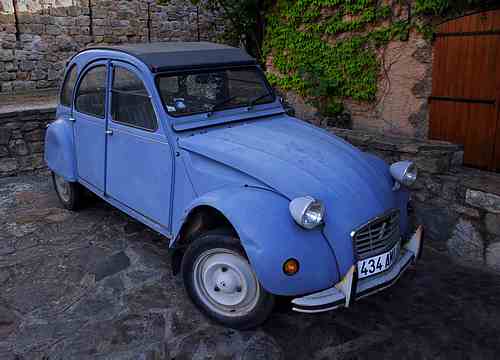I am in the process of moving house, and many of my possessions are now packed up and in storage. This means all my model kits and modelling tools are packed away, and even my desk has been dismantled and taken away. As my house move drags on, I have started to get restless and this weekend I finally snapped – I bought a 1/24 scale Revell Citroen 2CV kit, some paints, brushes and tools and effectively started modelling from scratch. With no desk, building is taking place on my kitchen worktop.
This actually opened my eyes: if you want to begin modelling these days, there are some really handy tool sets available. At my local model shop (Regal models, Chatham) I picked up a Humbrol-branded set comprising a sharp craft knife, tweezers, sprue cutters and a file for £9.99. I also purchased some polystyrene cement glue, two brushes (small and medium sized), silver and light grey enamel paints, and mid-grey and satin black acrylic aerosol paints. From Halfords, I picked up an aerosol of Ford Fjord Blue paint and what I thought in my distracted mood was some white plastic primer (it was actually a can of surface cleaner, not what I wanted but it still turned out to be useful).
This shot shows slight weathering on the canvas roof, and the decent paint shine achieved straight from the aerosol can.
The build began with one of my favourite jobs: giving the body shell its colour coat. Without any primer I was concerned that the paint finish might not be very good, but I was actually quite pleased with how it turned out. The paint is non-metallic so has a decent shine straight from the can. I want this basic 2CV to look a bit careworn and used, so I will not bother to polish the paint – after all, the real car would probably never have been polished in its life!
My new tools alongside the painted body shell.
At this time I also gave the chassis parts, floor and dashboard parts a coat of satin black, and the seats and interior panels got a coat of mid-grey. I then brush painted the wheels, grille and bumpers with light-grey enamel. The kit includes a chrome grill and headlamps and chrome hubcaps, but my 2CV will be a basic workhorse so I deliberately painted over the chrome on the grill and headlamps to represent the plastic items from an older, base-model 2CV. I will not fit the chrome hubcaps either. When I finished painting, I realised that my brush cleaning fluid - white spirit - is also all packed away, but luckily the surface cleaner I accidentally purchased works a treat as brush cleaner, so that worked out nicely!
More or less everything is now painted.
With most of the parts now painted, I used the light-grey enamel to dry-brush the floor, seats and roof. This is to give the impression of a little wear and to add some additional texture to the parts, to make them look more like fabric. The roof is fine I think, and the floor is OK, but I’m not really happy with the effect on the seats so I might do some work there (I might buy a set of weathering powders to improve the seats, which I also want to use on the exterior of the finished model).
This is the look I am going for with my 2CV.









